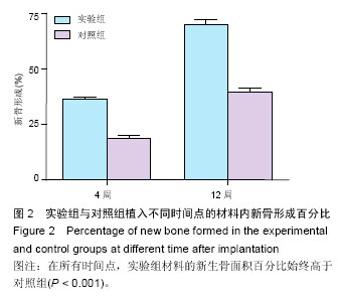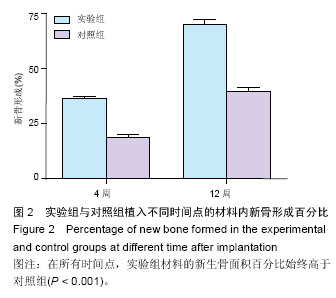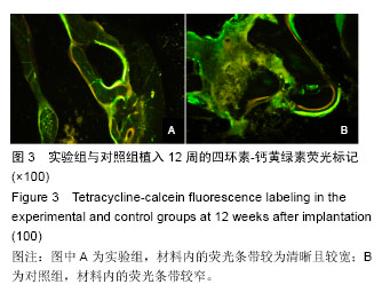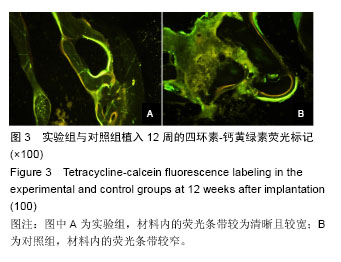| [1]Wang C,Wang Z,Li A,et al.Repair of segmental bone-defect of goat's tibia using a dynamic perfusion culture tissue engineering bone.J Biomed Mater Res A.2010;92(3):1145-1153.
[2]Gan Y,Dai K,Zhang P,et al.The clinical use of enriched bone marrow stem cells combined with porous beta-tricalcium phosphate in posterior spinal fusion.Biomaterials.2008; 29(29):3973-3982.
[3]Pittenger MF,Mackay AE,Beck SC,et al.Multilineage potential of adult human mesenchymal stem cells. Science.1999;284:l43-l47.
[4]Lei M,Fei C,ao Zhang Gi,et al.Study on bone marrow stem cells transfected by eukaryotic expression vector carrying BMP-2 gene.Chin J Lab Diagn. 2010;11(14): 1742-1744.
[5]Urist MR.Bone formation by autoinduction. Science. 1965;150:89329.
[6]Li RH,Bouxsein ML,Blake CA,et al.rhBMP-2 injected in a calcium phosphate paste (alpha-BSM) accelerates healing in the rabbit ulnar osteotomy model.J Orthop Res. 2003;21(6):997-1004.
[7]Seeherman H,Bouxsein M,Kim H,et al. Recombinant human bone morphogenetic protein-2 delivered in an injectable calcium phosphate paste accelerates osteotomy-site healing in a nonhuman primate model.J Bone Joint Surg Am.2004;86-A(9):1961-1972.
[8]Seeherman H,Li XJ,Li R,et al.rhBMP-2 Delivered in a calcium phosphate matrix accelerates metaphyseal bone induction in nonhuman primates. Paper presented at: Transactions of the 50th Annual Meeting of the Orthopaedic Research Society,2004;San Francisco,CA.
[9]Seeherman H,Smith-Adaline E,Parkington J,et al.A single intraosseous injection of rhBMP-2/CPM improves structure and strengthens the distal radius of ovariectomized nonhuman primates in 6 months. Paper presented at: Transactions of the 26 Annual Meeting of the American Society for Bone and Mineral Research,2004;Seattle, WA.
[10]Jansen JA,Vehof JW,Ruhe PQ,et al.Growth factor-loaded scaffolds for bone engineering.J Control Release.2005;101(1-3):127-136.
[11]Kroese-Deutman HC,Ruhe PQ,Spauwen PH,et al.Bone inductive properties of rhBMP-2 loaded porous calcium phosphate cement implants inserted at an ectopic site in rabbits. Biomaterials. 2005;26(10):1131-1138.
[12]Seeherman H, Wozney JM.Delivery of bone morphogenetic proteins for orthopedic tissue regeneration. Cytokine Growth Factor Rev. 2005;16(3):329-345.
[13]Kuboki Y,Jin Q,Takita H.Geometry of carriers controlling phenotypic expression in BMP-induced osteogenesis and chondro- genesis.J Bone Joint Surg Am.2001;83A[Suppl. 1(Pt 2)]:S105-115.
[14]Geiger M,Li RH,Friess W.Collagen sponges for bone regeneration with rhBMP¬2.Adv Drug Deliv Rev. 2003; 55(12):1613-1629.
[15]Li RH,Bouxsein ML,Blake CA,et al.rhBMP-2 injected in a calcium phosphate paste (alpha-BSM) accelerates healing in the rabbit ulnar osteotomy model.J Orthop Res 2003;21(6):997-1004.
[16]Southwood LL,Frisbie DD,Kawcak CE,et al.Evaluation of Ad-BMP-2 for enhancing fracture healing in an infected defect fracture rabbit model.J Orthop Res. 2004;22(1):66-72.
[17]Luca DF,Barnes KM,U yeda JA,et al.Regulation of growth plate chondrogenes is by bone morphogenetic protein-2.Endocrinology.2004;142(1):430-436.
[18]Chen D,Harris MA.BMP-2 enchances BMP-3 ,BMP-4 and bone cell differentiation marker genes expression during the induction of mineralizal bone mat rix formation in cultures of fetal tat calvarial osteoblasts.Calcif TissueInt(inpress). 2003;(12):210-216. |





